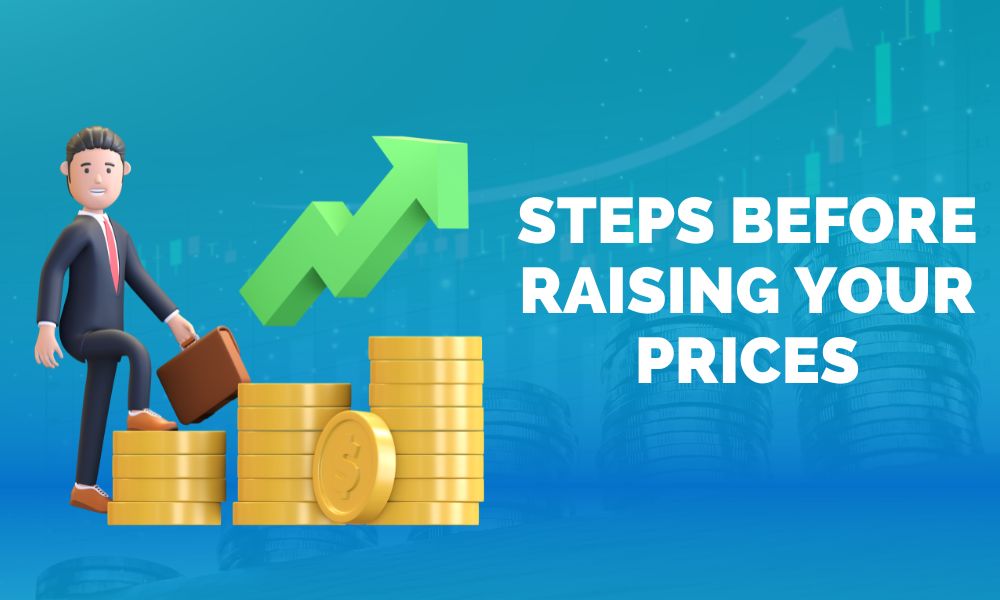
Especially in a struggling economy, raising your prices might seem like a nonsensical thing to do. But the reality is that, as a business, your costs are increasing all the time. You should be able to raise your prices as needed in order to offset those costs and maintain your profit margins.
With that said, there are various advantages and disadvantages to consider. Here are six steps you need to take before raising your prices!
1. Determine Whether You Should Raise the Prices
While you may have the ability to raise your prices at will, it can be difficult to know when you should raise them.
Have your costs increased? Are your margins poor? Do you provide any value that you’re not currently charging for? Are you sending the wrong message with your pricing? Are you charging less than you’re worth?
These are all perfectly good reasons to consider increasing your prices.
2. List All of Your Reasons for a Price Increase, as well as the Pros and Cons
Once you have spent some time thinking of the different reasons why you need to raise your prices, go ahead and write them down.
Next, list out all of the pros and cons that might come from increasing your prices. Your “pros” column might look something like this:
- Covering increased costs
- Improving your products and services
- Shedding low-paying customers
- Positioning your products and services as “premium”
- Eliminating the perception of being the “cheap” option
The “cons” column, on the other hand, might include the following:
- Losing customers
- Earning fewer sales
- Receiving negative feedback
3. Find Ways to Increase the Value of Your Products and Services
One of the best ways to justify a price increase is to add something to your product or service that will increase its perceived value.
This doesn’t necessarily mean that you need to abandon the current version of your product or service either. You can create tiered products and services that increase in price, depending on the add-ons and features that are included.
What’s more, doing this allows you to offer a more unique product or service—further distinguishing you from a commodity that your customer can easily find elsewhere.
4. Decide on the amount of the Increase(s)
Are you going to increase your price once, or are you going to raise the price incrementally? Are you going to increase them across the board, or only on certain products or services?
Personally, I find that making small increases over time tends to be the more effective approach. Try rolling out price increases for new customers while rewarding your long-time customers with a discounted price over a certain period.
5. Understand That You Will Lose Customers
Losing customers is always the business owner’s greatest fear when raising prices. Will you actually lose customers if you raise your prices? Well, yes—you probably will. The reality is that, for some customers, a higher price might be a dealbreaker. In most cases, however, you shouldn’t let that stop you from raising prices, and here’s why.
Suppose that you implement a 10% price increase that gives you a 40% profit margin. You would need to lose 20% of your entire customer base before you start losing money. Are you likely to lose one in every five customers due to a 10% price increase? Probably not.
What’s more, the time you will save by no longer working with customers who primarily care about prices will allow you to spend more time with your best customers.
6. Create a Plan for Your Price Increase
Every good price increase strategy needs a plan. Do you want to announce your price increase? Would you rather not announce the price increase but sit down with a few of your long-term customers to let them know?
Personally, I find price increase announcements to be unnecessary. The reason why very few businesses elect to announce price increases is that prices are elastic. Most customers expect and even tolerate the occasional increase.
If you do end up going the route of a price increase announcement, however, be sure to focus on the value you’re adding rather than the increase itself.
Finally, try to be flexible with your most loyal customers. If you receive backlash from long-time customers, do your best to work with them when possible!
